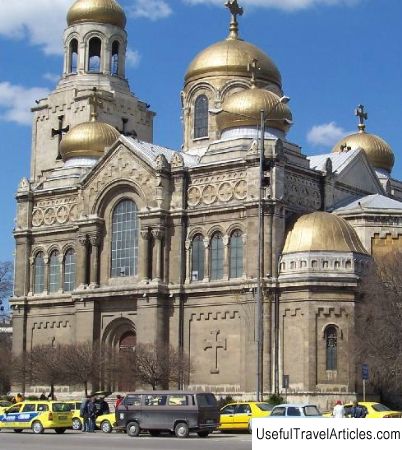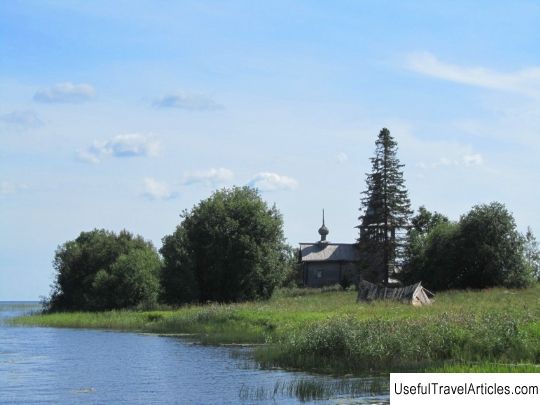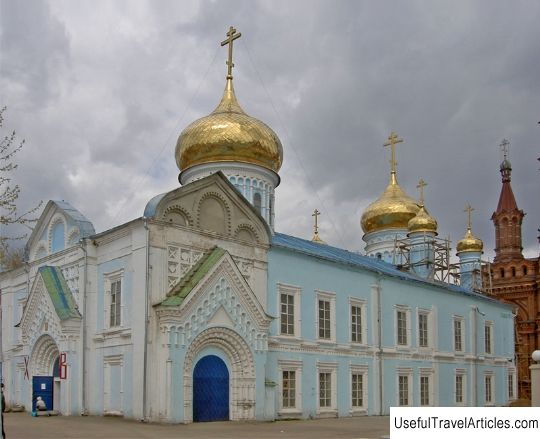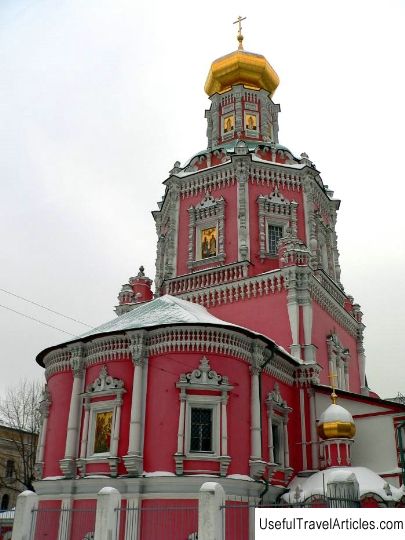The Epiphany Church in the village of Chelmuzhi description and photos - Russia - Karelia: Medvezhyegorsky District
Rating: 7,8/10 (785 votes) 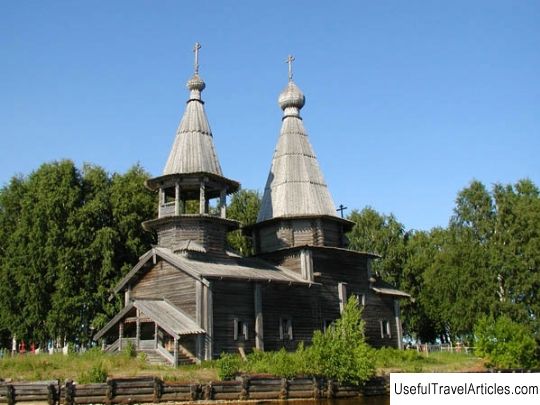
Epiphany Church in the village of Chelmuzhi description and photos - Russia - Karelia: Medvezhyegorsky District. Detailed information about the attraction. Description, photos and a map showing the nearest significant objects. Photo and descriptionThe Epiphany Church in the famous village of Chelmuzhi is one of the monuments of folk temple architecture, which speaks of the inexhaustible talent of the Zaonezh ancestors. For more than 350 years the church has stood on the sandy shore of Povenets Bay and, like a lighthouse, is visible from afar. Historical events accompanying the development of the church took place in Russia in the late 16th - early 17th centuries, which are associated with the names of Boris Godunov, priest Ermolai Gerasimov, Tsar Mikhail Fedorovich. In 1605, a church was laid in the village of Chelmuzhi, which received the name "Epiphany". In the same year, the church was rebuilt thanks to donations from the former nun (nun) Martha. Compared to the old look, the church acquired a more expressive silhouette as a result of the superstructure of the church premises and the refectory in the form of a low octagon, which was crowned with a hipped roof with an enlarged onion dome. As for the significant size of the refectory, it is due to certain features related to the social life of the past. After the collapse of the Novgorod Republic, the peasants gained some freedom, which gave fertile ground for the zemstvo administration, the activation of which fell on the period of construction of the Chelmuzhsky temple. At this time, a special role of community centers was played by church refectories, in which the people gathered. For this reason, the refectory has an uncharacteristically large room. The fact of the secondary reconstruction of the church in the 18th century is known, at which the temple acquired certain structural and architectural features. For example, the refectory was further expanded, a hipped-roof belfry-belfry appeared above the entryway, and door and window openings were hewn. This kind of changes seriously affected the artistic appearance of the temple, which lost its former poise and severity. During the Great Patriotic War, it was decided to dismantle the bell tower and the tent, which could serve as a reference point for the enemy's long-range weapons. But already in the 1950s, repair and restoration work began in the Church of the Epiphany, which in some way changed the usual appearance of the church: the porch was moved, the hipped roofs became covered with aspen ploughshare, the shape and the bottom edge of the small barrel altar cover changed, the carved piers were restored . The interior composition of the temple was built on the principle of a suite. All the premises of the church form a rectangle, and the main walls are present only between the hallway and the refectory. During a visit to the Epiphany Church, the effect of a psychological impact on those present comes, because the increase in emotional stress occurs as you move "into the light" - along the way from low and poorly lit entrance to the high and light refectory. The most illuminated room of the church is 4.15 meters high, the central compositional role of which is played by the iconostasis. From the old iconostasis, only traces of felling have survived. It consisted of tiers, which were separated by tabs-shelves-beams, on which icons were installed. The tyabla themselves were beautifully painted with floral designs, alternating with eight-petalled flowers on a light ocher background; all the petals through one were decorated with ocher and greenery. The ornament is surrounded by a black line. The largest number of icons were transported in 1963 by an expedition of the Museum of Fine Arts located in Karelia - storerooms are kept here. On the lower tier of the iconostasis there are icons of the "local" row, which depict the most revered saints in Zaonezhie; the second row is a "Deesis" row, represented by icons depicting angels and saints; the third "prophetic" row consisted of icons with images at the bottom of the holidays, and at the top - prophets. We can say that in general the iconostasis had a canonical structure. Of the representatives of the first row, only two icons of the 17th century have survived, from the second and third tiers, 12 icons from each have reached us. The fate of the Epiphany Church carries in itself a living history not only of people and the art of building, but also of the state of that time, which makes the temple even more interesting to explore.        We also recommend reading Sri Mahamariamman Temple description and photos - Malaysia: Kuala Lumpur Topic: The Epiphany Church in the village of Chelmuzhi description and photos - Russia - Karelia: Medvezhyegorsky District. |
